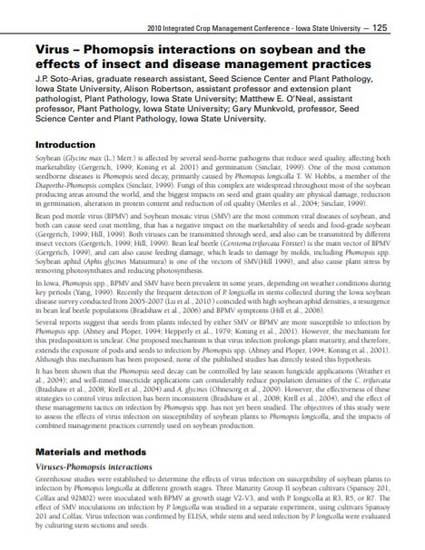
Presentation
Virus – Phomopsis interactions on soybean and the effects of insect and disease management practices
Integrated Crop Management Conference
(2010)
Abstract
Soybean (Glycine max (L.) Merr.) is affected by several seed-borne pathogens that reduce seed quality, affecting both marketability (Gergerich, 1999; Koning et al. 2001) and germination (Sinclair, 1999). One of the most common seedborne diseases is Phomopsis seed decay, primarily caused by Phomopsis longicolla T. W. Hobbs, a member of the Diaporthe-Phomopsis complex (Sinclair, 1999). Fungi of this complex are widespread throughout most of the soybean producing areas around the world, and the biggest impacts on seed and grain quality are physical damage, reduction in germination, alteration in protein content and reduction of oil quality (Meriles et al., 2004; Sinclair, 1999).
Disciplines
Publication Date
December 1, 2010
Location
Iowa State University, Ames, IA
DOI
10.31274/icm-180809-263
Citation Information
J. P. Soto-Arias, Alison Robertson, Matthew E. O'Neal and Gary P. Munkvold. "Virus – Phomopsis interactions on soybean and the effects of insect and disease management practices" Integrated Crop Management Conference (2010) Available at: http://works.bepress.com/jp-dundore-arias/20/
